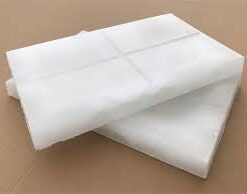candle lights
R229.99
Please call to ask for the Minimum quantity
Paraffin Wax and Candle wax difference
The key difference between paraffin wax and candle wax is that paraffin wax is a form of wax that we produce from petroleum, coal or shale oil whereas candle wax is any form of wax that we can use to make candles. … There are some other forms of waxes as well
Paraffin wax
Paraffin wax (or petroleum wax) is a soft colorless solid derived from petroleum, coal or shale oil that consists of a mixture of hydrocarbon molecules containing between twenty and forty carbon atoms. It is solid at room temperature and begins to melt above approximately 37 °C (99 °F),[2] and its boiling point is above 370 °C (698 °F).[3] Common applications for paraffin wax include lubrication, electrical insulation, and candles;[4] dyed paraffin wax can be made into crayons. It is distinct from kerosene and other petroleum products that are sometimes called paraffin.[5]
Un-dyed, unscented paraffin candles are odorless and bluish-white. Paraffin wax was first created by Carl Reichenbach in Germany in 1830 and marked a major advancement in candle making technology, as it burned more cleanly and reliably than tallow candles and was cheaper to produce.[
Related products
paraffin wax
paraffin wax
paraffin wax
paraffin wax
paraffin wax
paraffin wax
paraffin wax
paraffin wax








